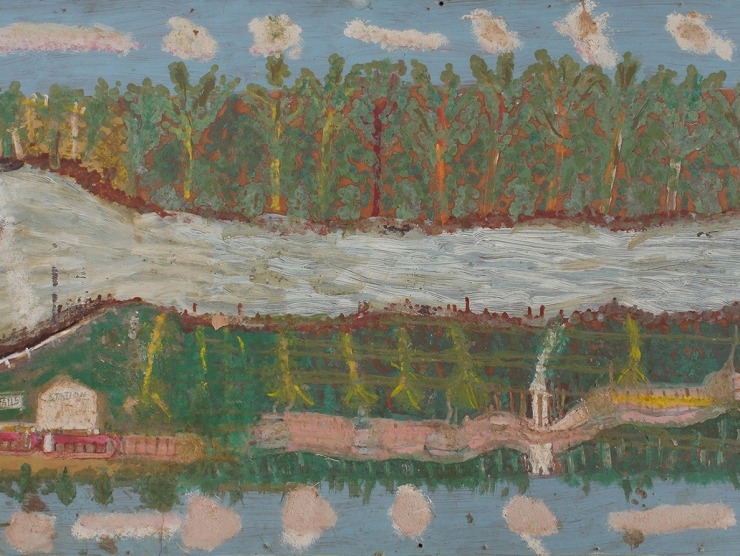
Featuring Ted Diamond, Rose deSmith Greenman, Selby Warren, Alvaro Alvarez, Lisa Reid, Alan Constable, Lobo, Esther Johnson, Betty Tyson, Charles Callins
Featuring Prewar Batuan Painters, Cekeg
Alexander DiJulio’s Lower East Side gallery returns to the Outsider Art Fair for the gallery’s sophomore presentation, focusing on a grouping of distinctive canvases and inks on paper from the Batuan region of Bali, Indonesia. This exhibit will feature the artwork of preeminent contemporary Batuan painter Cekeg (b. 1965) as paired with traditional ink works from the artists of the Pre-War period of the 1930s whose dynastic teachings led contemporary painters like Cekeg to be where they are today. The presentation will feature exceptionally rare works from 1930s Batuan painters such as Kandel Roeka and Malen, including Kandel Roeka’s The Deceitful Hunter. These pieces are in short supply and highly sought after for their unique contributions to art history.
Cekeg (b. 1965)
Cekeg was born in 1965 in Batuan, Bali. Cekeg is best known for his irreverent bucking of the traditional Balinese style of dynastic painting made famous in his hometown of Batuan—now facilitating brightly colored inks and layered modern imagery of planes and cars set amongst traditional backdrops. Originally Cekeg lived in a modest house, consisting of only two rooms without doors and windows, made of recycled plywood. Proceeds from the sales of his paintings (which take several months to complete) were used to meet his daily needs. Among Cekeg's earliest paintings, he depicted traditional subjects like wayang (puppets), tantri (animal stories), and local scenes from everyday life (prayers, temples, farming). The figures in his paintings wore sarongs but had no upper-body clothing. His shift away from traditional motifs and towards more contemporary color pallets and imagery began when he was given a grant to produce works for a private collection in Singapore. He facilitated brightly colored inks and the incorporation of more western imagery including fully dressed figures with hats, shoes and goggles, as well as the inclusion of buildings, airplanes and cars. Cekeg’s practice is now a premier example of how the artist has superseded the traditional Balinese painting style in exchange for a more radical irreverent one directly engaging with the past but looking forward in a contemporary manner.
Pre-War Batuan Painters
Batuan paintings are remarkably dense, with deeply saturated tones. The images are often dark and sometimes macabre, but they are always carefully made and finely balanced. They create labyrinths of pulsating light that leave very little place for the mind or the eye to rest. In the early 1930s significant Dutch painters such as Walter Spies visited Batuan as a place to vacation and brought western techniques to the region. However, the education was mutual as many of these Dutch painters learned specific painting techniques from the indigenous people and exposed this unique style to Europe and the Americas. The painters of the 1930s in Batuan arguably produced some of the most significant paintings of the era, subtly influencing abstract artists of postwar Europe and the United States with their robust and bristling energy, use of distilled color pallets and display of all-over compositions that would fall into pattern and abstraction at a distance. This is akin to how much of the Surrealist movement was influenced by Africana following the First World War.